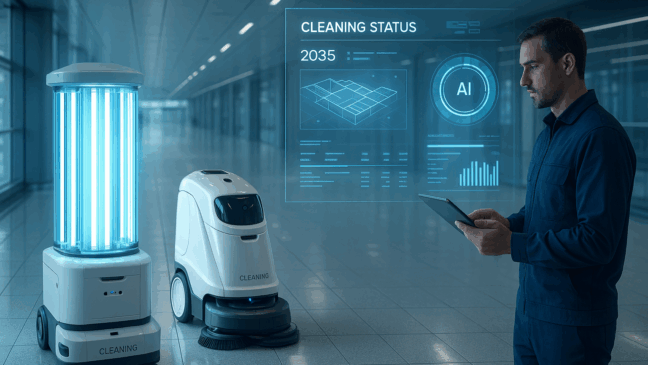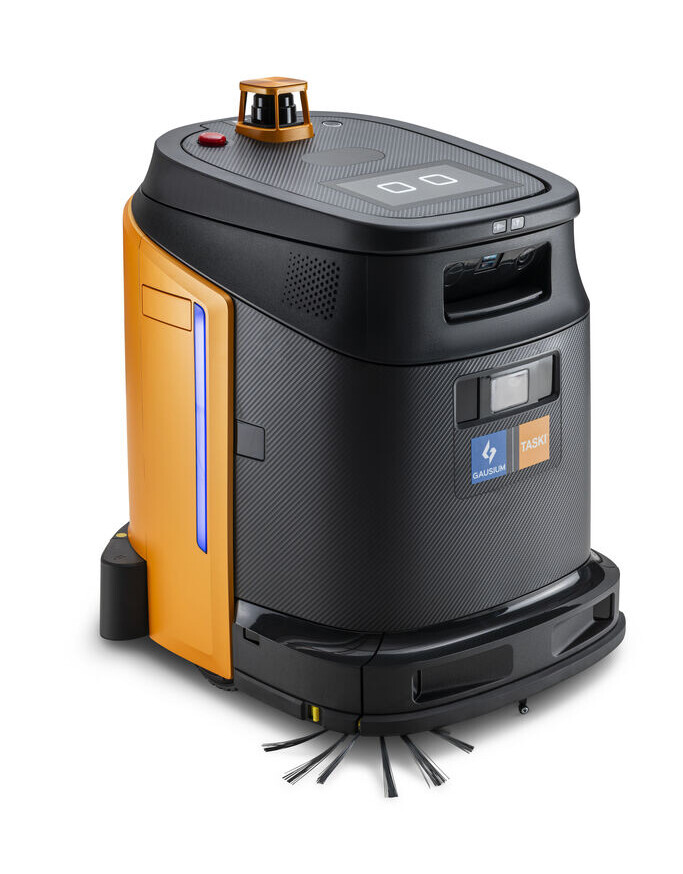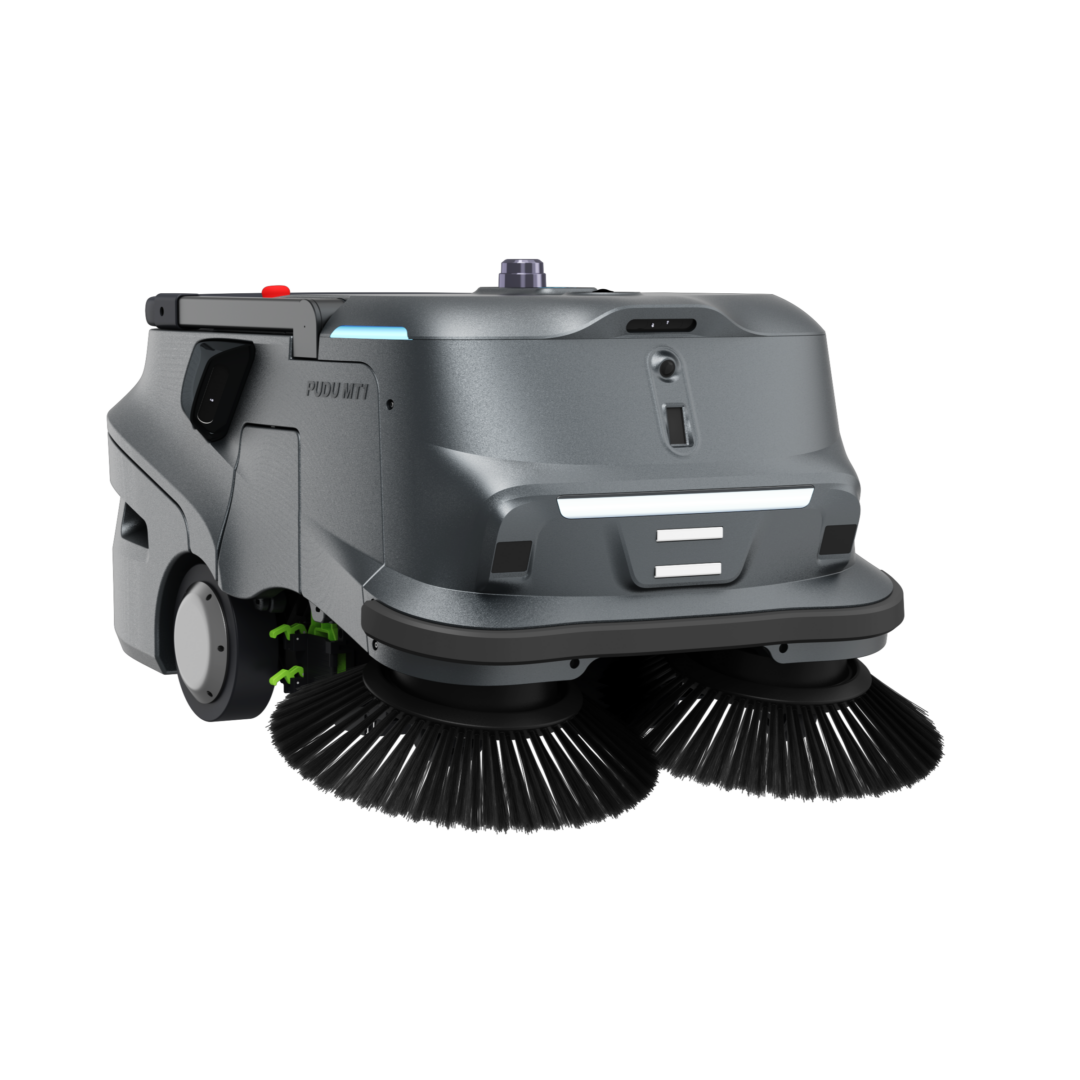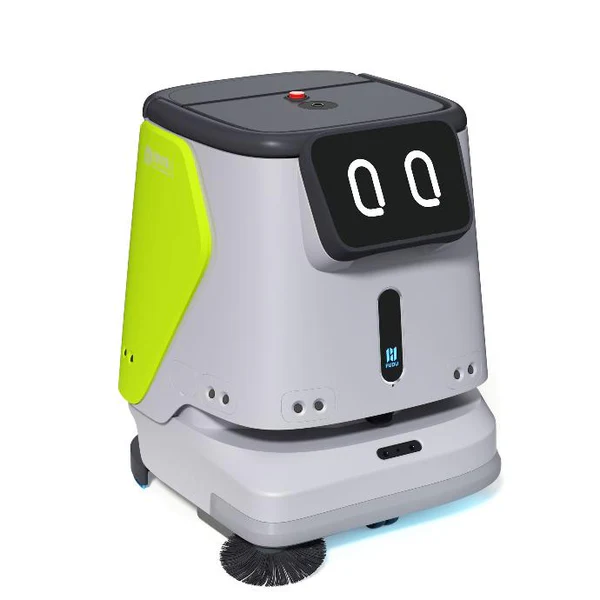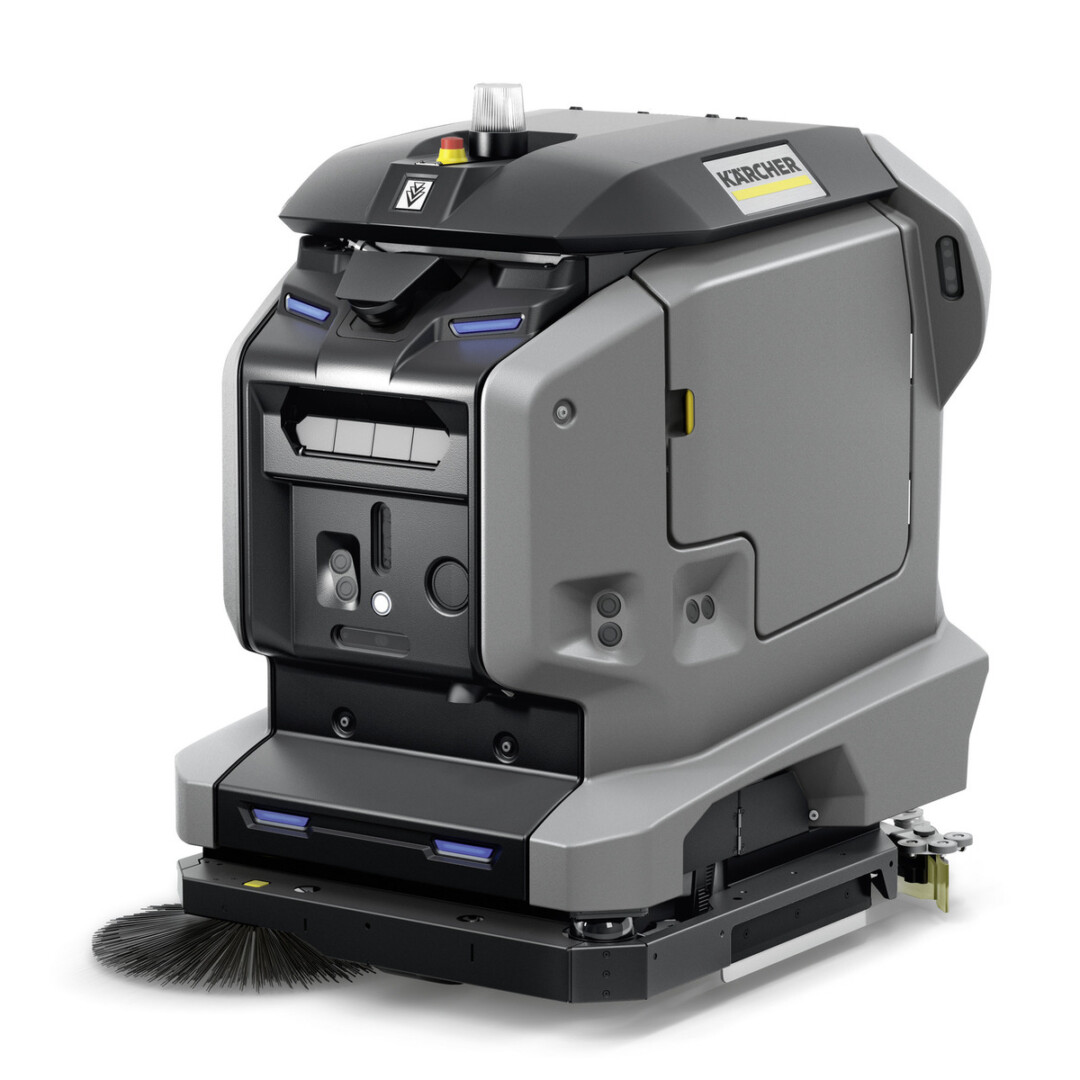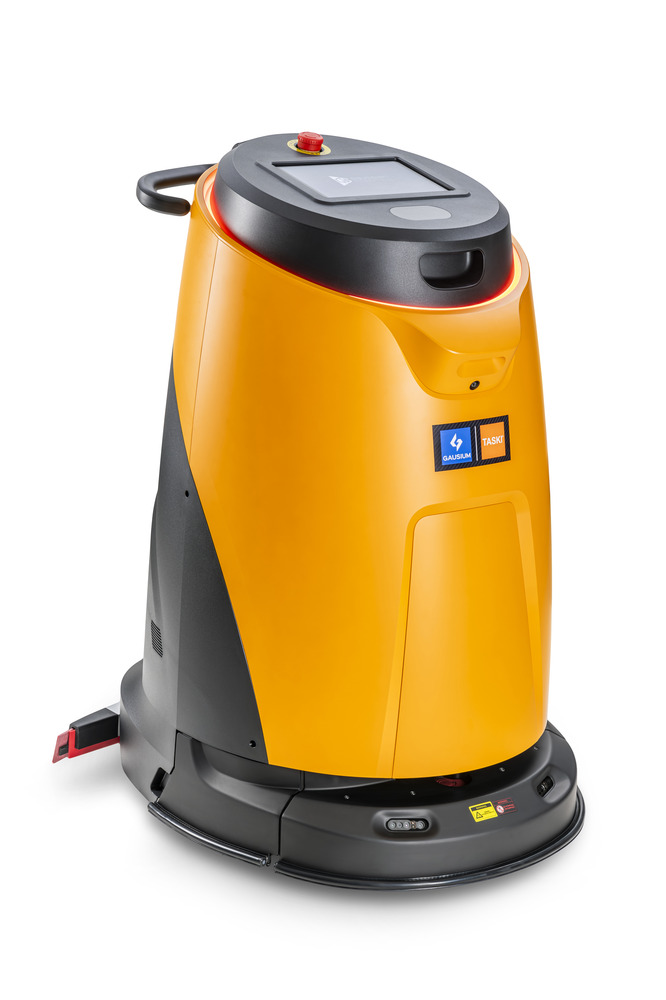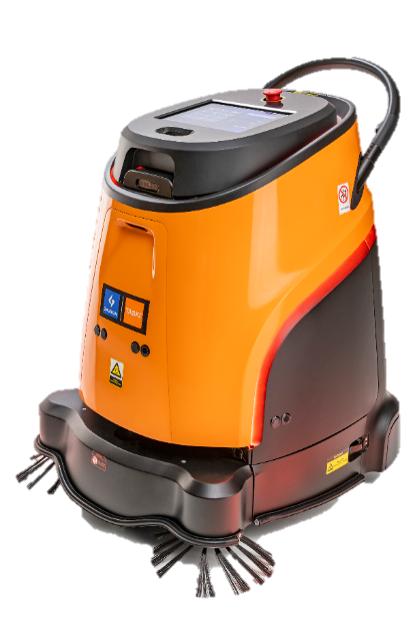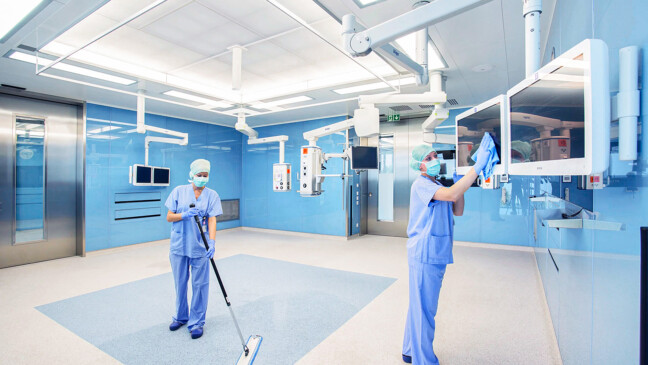
24.06.25
Autonomous floor cleaning in practice: findings from a pilot project in the pharmaceutical sector
As part of an Enzler Group DigiLab project, the PUDU CC1 scrubber-dryer robot was tested under real-life conditions in a pharmaceutical plant in Switzerland. The aim was to evaluate the technical performance, cleaning quality and cost-effectiveness of autonomous cleaning solutions. The robot impressed with its reliable night-time operations, a cleaning result on a par with manual labour and a realistic amortisation potential of between three and six years - with a simultaneous need for selective manual support.
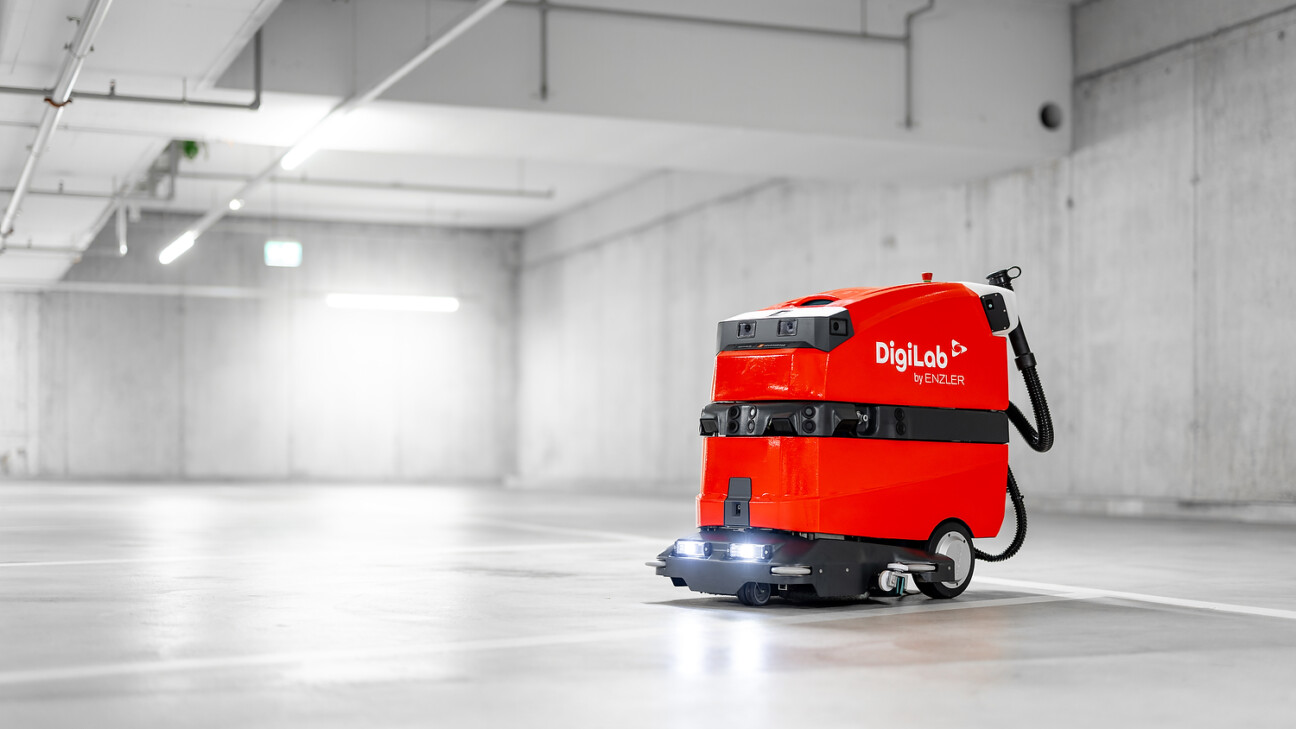
Background and objectives
The DigiLab focusses on testing and introducing new technologies in the field of professional cleaning. The aim of the DigiLab is to test digital solutions in a practical manner, evaluate their potential for increasing efficiency and improving quality and derive specific recommendations for action for operations.
As part of a digitalisation project for a leading pharmaceutical company in Switzerland, DigiLab tested the use of autonomous cleaning technology to optimise maintenance cleaning in warehouse, production and logistics areas. Following an initial trial with a sweeping robot, a field test was carried out with the PUDU CC1 scrubber-dryer robot.
The aim was to evaluate the technical suitability, cleaning quality, operational safety and cost-effectiveness of the robot under real-life conditions.
Test device and environment
The cleaning appliance used in the field test was the PUDU CC1, a compact and autonomous scrubber-dryer robot. The list price of the appliance is 24,000 Swiss francs. It has a fresh water tank with a capacity of 15 litres and a working width of 400 millimetres. The maximum travel speed is 1.2 metres per second. The charging time of the robot is less than four hours, which enables flexible use in cleaning operations.
The test area covered a total of 1,022 m², including 739 m² of traffic area and 283 m² of storage area. Cleaning was carried out six times a week.

Results at a glance
Autonomy & performance
The robot worked largely independently, but required manual pre-cleaning to remove coarse dirt before each use. A cleaning cycle lasted around four hours, which corresponds to an area performance of approx. 250 m²/h. The automatic return to the docking station for recharging worked reliably.
Obstacle detection
There were no collisions with people or objects during the night-time operations (23:00-05:00). Once the robot got stuck in an unfavourable position and had to be freed manually.
Cleaning quality
The visual result corresponded to the quality of manual cleaning. No visible losses were detected.
Economic consideration
In the economic analysis, the savings in annual cleaning costs amount to around CHF 8,390 with a labour input of 220 hours per year. In this case, the amortisation period is 2.9 years. This takes into account the necessary manual preparation and follow-up work that is still required despite the high degree of automation.
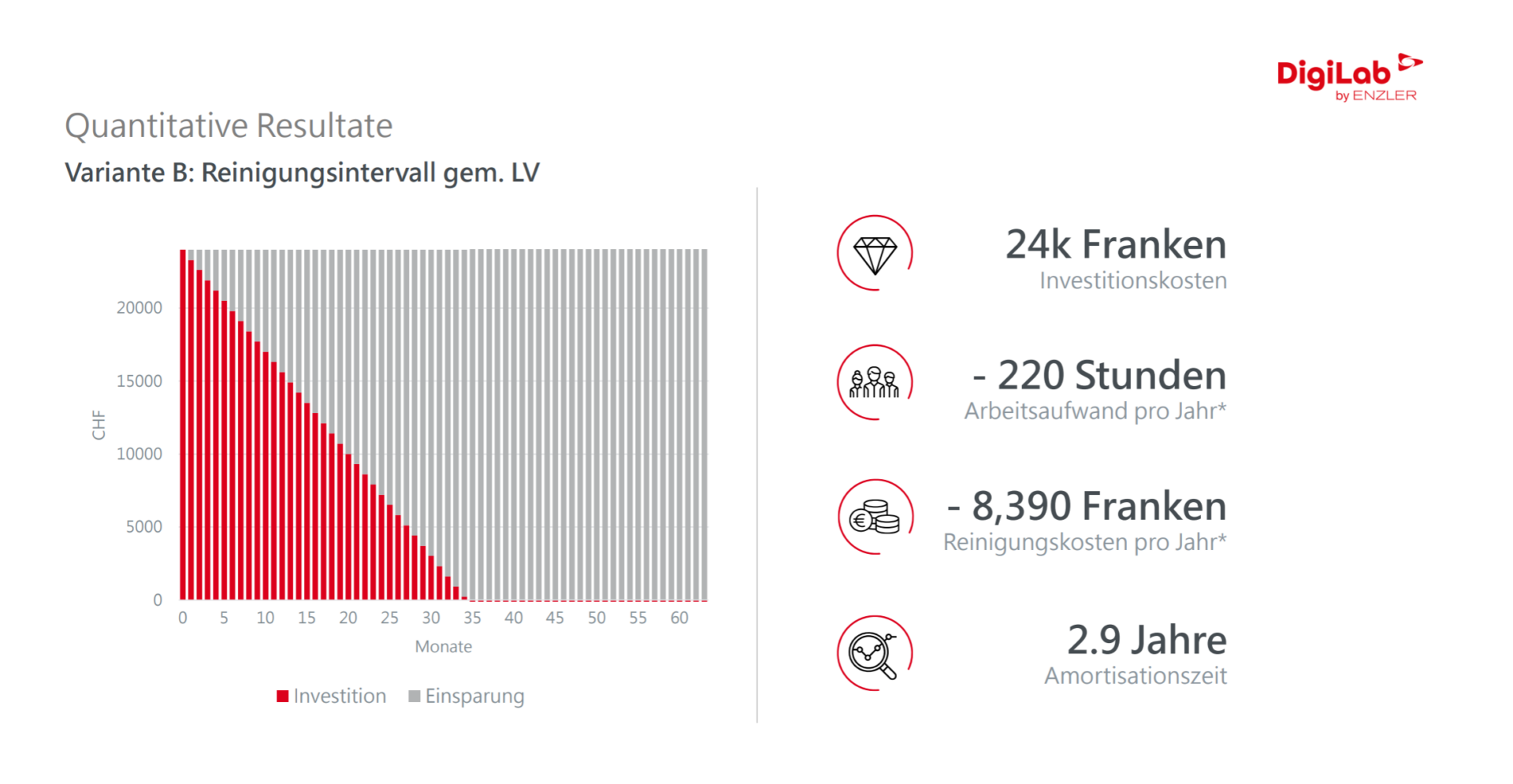
Findings from pilot project
The field test carried out with the PUDU CC1 scrubber-dryer robot showed that the use of autonomous cleaning technology works in principle under real conditions and can be implemented both technically and organisationally. The cleaning results met expectations and were comparable to the quality of manual cleaning. A particularly positive aspect was that the robot was able to carry out the cleaning tasks largely independently overnight, which significantly reduced the risk of collisions with people or other machines. The relief for cleaning staff, particularly with regard to night work, was also perceived as a significant advantage.
At the same time, it became clear that the use of a cleaning robot is not entirely possible without human support. Manual preparation and follow-up work as well as selective interventions in the event of faults or access restrictions remain necessary. The profitability analysis showed that the investment in the robot can be amortised within approx. three years in a comparable application scenario. The level of savings depends largely on the selected cleaning frequency and the area to be cleaned.
Overall, it can be said that the PUDU CC1 is a technically reliable and economically interesting solution for automated floor cleaning in industrial environments – provided that the operational conditions and personnel processes are adapted accordingly.

